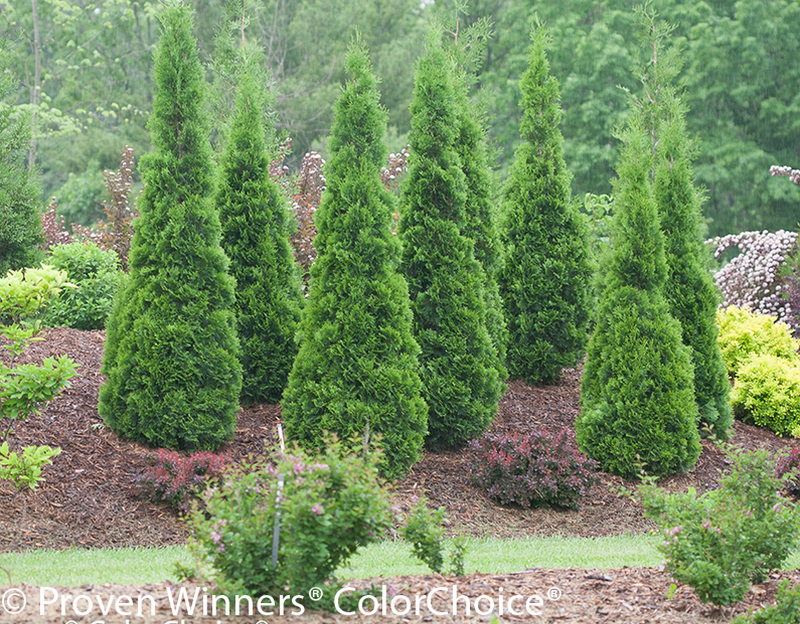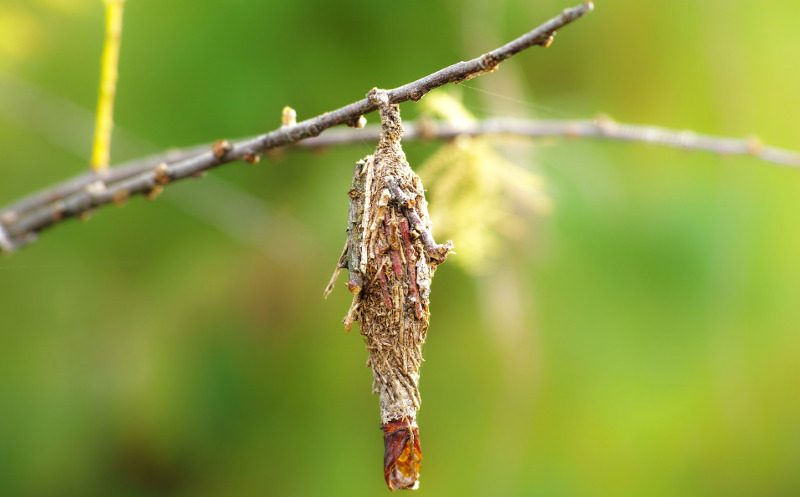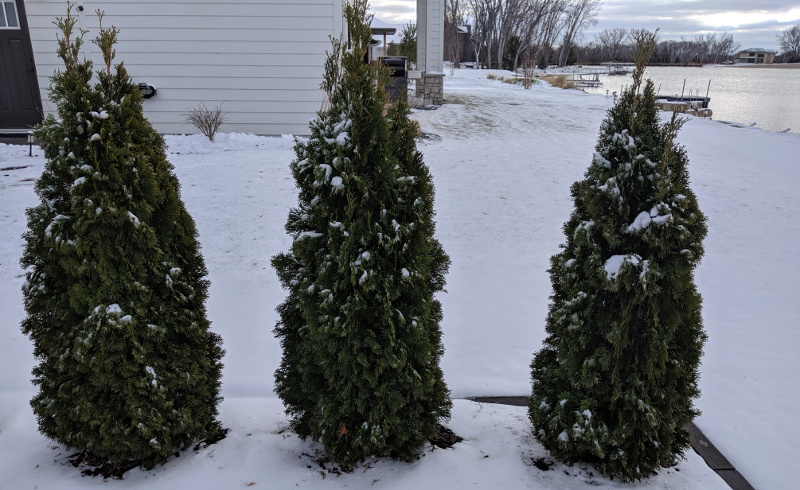Arborvitae are known as the tree of life and their unique appearance and hardy traits make them perfect for many landscapes. They are popular for a reason and adding them to your garden may bring the look you desire. As beautiful as they are, caring for them correctly is important. This article will provide some important information for readers to help ensure your arborvitae are healthy and growing well.
What exactly are arborvitae?
Arborvitae are one of five species of coniferous trees from the genus, or family, thuja. They are popular for their flat shoots that grow in a composed way. If left to themselves, they will maintain the ornamental look so popular to their type. This is because their needle-like leaves grow in the same plane, revealing a flat texture along the edge of the tree in a single direction.

This is why they look like tall, thin pyramids or cones. It can help to know this because twisting of the branches or wind shear can disrupt the natural growth and appealing look of the arborvitae. This is also why it can be important to ensure that leaves higher on the tree don’t shade lower needles, to keep the tree as healthy as possible.
Basic Arborvitae Care
Arborvitaes are not just popular because of their appearance. They are quite hardy and low maintenance. Even though they can survive a range of conditions, they do best with a little care. Here are a few basic things to keep in mind:
- Ensure proper spacing when planting depending on the type
- Arborvitae do best in well drained locations and want to send their roots deep in nutrient rich soil
- Full sun is best, but they can do well in partial shade
- Soil should not be overly alkaline (above pH of 8) or acidic (below pH of 7)
Pruning Arborvitae
Arborvitae will maintain their attractive pyramid shape naturally, but some pruning can be needed. Pruning can be done at different times during the year and depends on what you are trying to do with the pruning. Typically, pruning in the fall or early winter is best.
Watering Arborvitae
How much should I water my arborvitae? When arborvitae are planted they should be watered daily and the soil kept moist. Think “low and slow” by turning the garden hose on low and watering the root ball very slowly. A few drops per second for 2-4 hours (depending on how quickly the soil drains) per day on the first 10 days will work well.
As the root system draws into the ground (after about 10 days), you will want to back that off to every other day. 3-4 weeks after planting, drop it down to watering every 3-4 days. The top soil should be dry when you return for your next watering. By 6 weeks post-planting, You should be watering your new arborvitae “low and slow” about once a week.
If you have a well established arborvitae, and are wondering how much to water your arborvitae, think of your arborvitae like a camel! A big, low and slow drink once a week will keep it going pretty well.
Watering Guide For Arborvitae:
| After Planting | 2-4 hours of dripping hose every day for 10 days |
| 2 Weeks After Planting | 2 hours of dripping hose every 2 days |
| 3 Weeks After Planting | 2 hours of dripping hose every 3-4 days |
| Once Established (6+ weeks) | 2 hours of dripping hose once per week |
Watering an arborvitae means using common sense! Water more during times of high heat and drought. Water less during damper, cooler seasons. Moderation is the key as you don’t want soil that is soaked or drying the arborvitae out.
Arborvitae Pests and Diseases
What are pests to arborvitae? One of the main pests are deer! They eat the leaves (especially of younger arborvitae) and may need to be fenced off to protect the arborvitae.
Bagworm is another common pest to arborvitae. If you see small pods on the twigs or leaves that look like cocoons, then you may need to address bagworms with spray.

Arborvitae can also be susceptible to other common pests and diseases. Molds, mildews, and even sun scorch can affect Arborvitae. Look for brown or dying leaves and even unusual growth or fungus-like material growing on the leaves.
Fertilizing Arborvitae
Arborvitae should be fertilized one time per year using granular, slow-release fertilizer. Typically, nitrogen is one of the most important fertilizers to add over the range of the roots, but selecting a general fertilizer with various nutrients is wisest.
Fertilize Arborvitae in the spring before new growth begins. Apply the fertilizer as the packaging indicates, usually over the area the roots are expected to expand to (3 feet out from the tree in all directions is a good estimate when trying to decide where to apply the fertilizer).
Fertilizing Arborvitae depends on the tree. If the tree seems to be thriving and growing without additional fertilizer, then you probably don’t need it. Most often, arborvitaes not growing in thick hedges close to one another can thrive without fertilizer. It is when they grow very closely to other shrubs and trees and compete for nutrients that fertilizing arborvitae is essential.
In general, arborvitae have a fast growth rate. And applying fertilizer at the correct time can help ensure the trees or shrubs continue to flourish and grow to the proper size in no time.
Arborvitae Winter Care
Winterizing arborvitae trees involves protecting the roots, preventing dehydration, and monitoring in extreme weather. Protect the roots of arborvitae by applying a layer of mulch around the tree that is at least 6” deep and 3 feet out from the trunk in all directions. Water the tree on warmer days (the temperature should stay above freezing for 24 hours before and after watering).

Monitor to ensure snowfall is not causing the tree to bend or snap. Also, monitor arborvitae if there is the potential for high winter winds that may snap the tree. If the top of the tree breaks off, it can be years before it returns to its pyramid shape. Arborvitae can be especially susceptible to this in the winter, when snow and ice are present, but this applies during all seasons as well. If the snow is covering the leaves at the base of the plant, that should that part of the plant protected and prevent winter burn.
Common Questions About Arborvitae
Why Do Arborvitae Trees Turn Brown?
There is any number of factors that arborvitae to turning brown. It may be sun scorch, damage from the cold or wind, or broken branches. Sometimes it is just the nature of the variety. Some arborvitaes turn yellow, then brown or rust, starting at the center of the tree and moving outwards. This is only the tree shedding its oldest, most mature, inside the foliage, and the foliage on the outside should remain healthy and green.
What Is The Growth Rate For Arborvitae?
Arborvitae have a slow to moderate growth rate, though there are many variables that affect this, they generally grow 1 to 2 feet annually.
How Do You Care For Arborvitae In The Spring?
Arborvitae should only be fertilized once a year if they don't seem to be healthy and thriving, and spring is the best time to do so before any new growth starts to show. Fertilize with a granular fertilizer that will release slowly over time, and has a variety of nutrients.
Have a question about arborvitae? Fill out the form below and we will try and get back to your question as soon as possible. We may even feature your question on this article to help other gardeners!
 |
Author Chris Link - Published 1-26-2020 |
